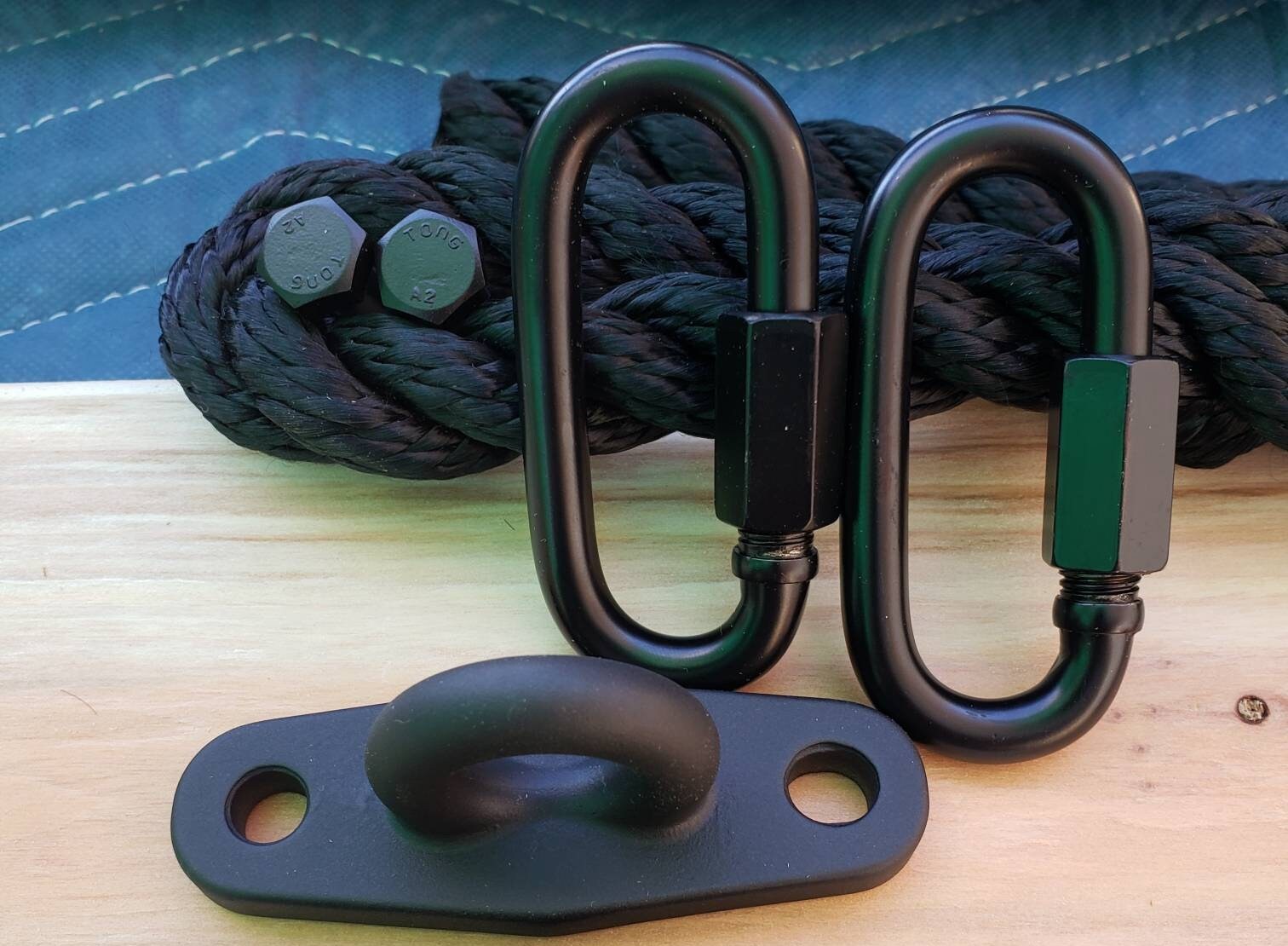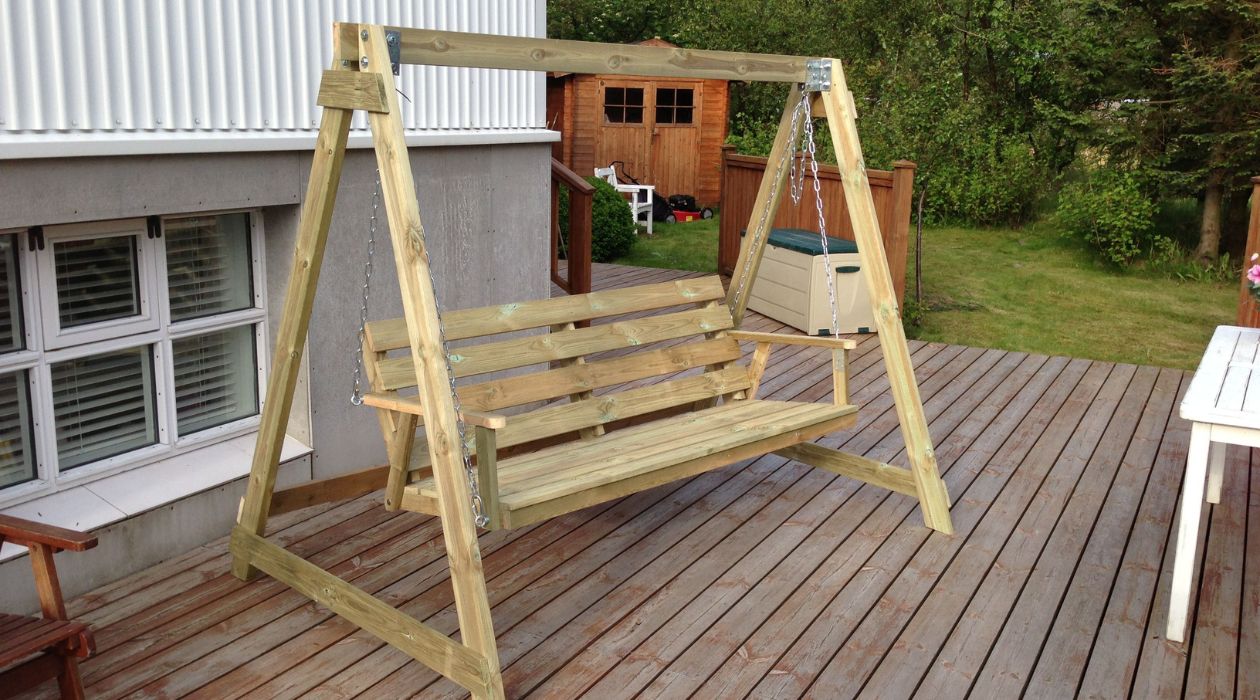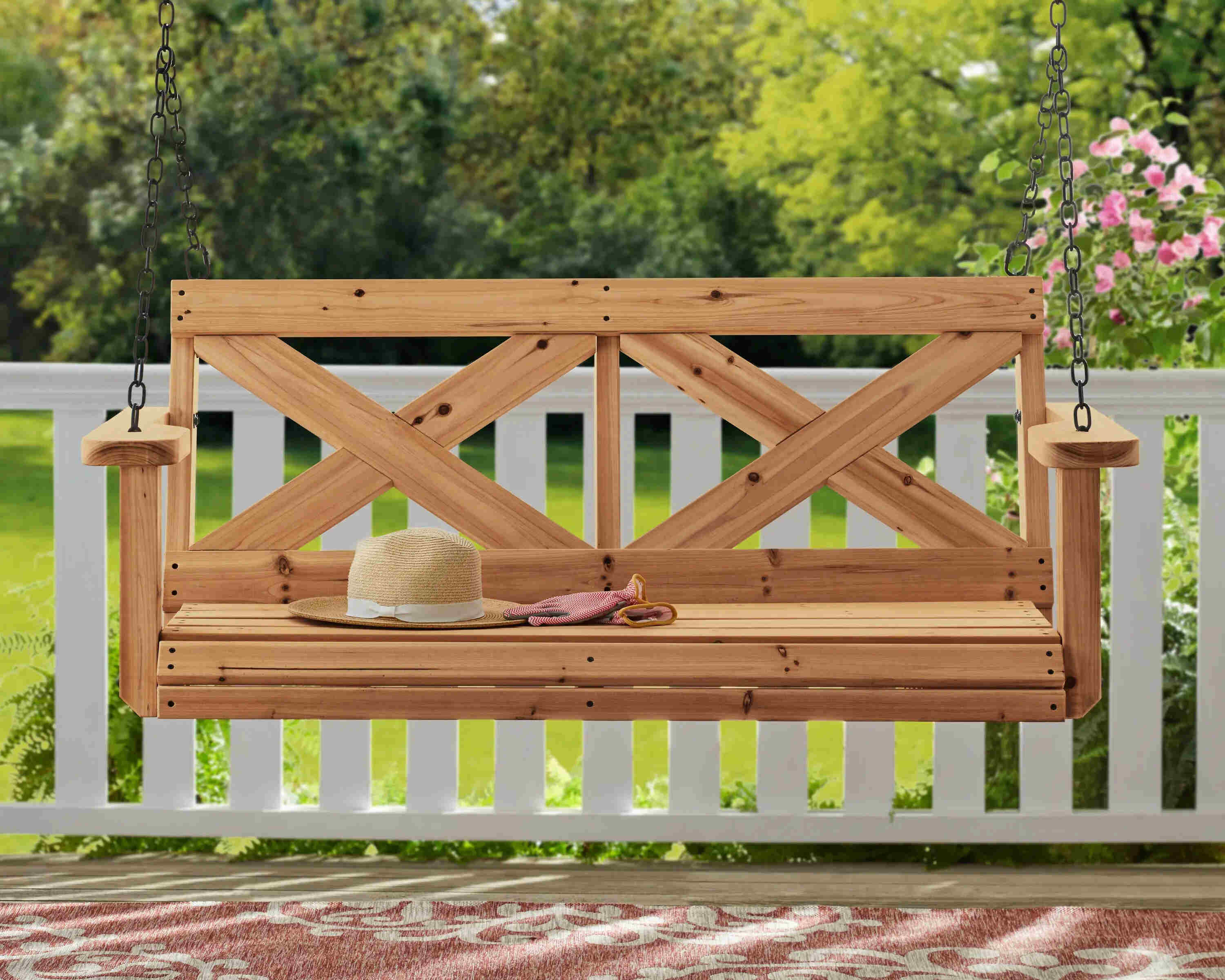

Articles
How To Hang Porch Swing With Rope
Modified: December 7, 2023
Learn how to hang a porch swing with rope in this helpful article. Get step-by-step instructions and tips for a secure and enjoyable swing experience.
(Many of the links in this article redirect to a specific reviewed product. Your purchase of these products through affiliate links helps to generate commission for Storables.com, at no extra cost. Learn more)
Introduction
A porch swing is a wonderful addition to any outdoor space. It provides a cozy spot to relax and enjoy the fresh air, and can quickly become a favorite spot for family and friends to gather. If you’re interested in hanging a porch swing with rope, you’re in the right place. In this article, we’ll guide you through the step-by-step process of properly hanging a porch swing using rope.
Before we dive into the details, it’s important to note that safety should always be a top priority when installing any type of swing. It’s crucial to ensure that the structure you’re attaching the swing to is sturdy and can support the weight of the swing and the individuals who will be using it.
Now, let’s get started on setting up your perfect outdoor relaxation spot!
Key Takeaways:
- Choose a sturdy, spacious, and scenic spot for your porch swing, and gather the right tools and materials for a safe and enjoyable hanging experience.
- Test the stability, make necessary adjustments, and enjoy the therapeutic benefits of your hanging porch swing with added comfort and relaxation accessories.
Read more: How To Hang A Porch Swing From A Tree
Step 1: Choose the Right Spot
The first step in hanging a porch swing with rope is to choose the perfect spot for it. Here are a few things to consider when selecting the ideal location:
- Space: Ensure that you have enough space to comfortably swing without hitting any obstacles such as walls, trees, or other furniture. Measure the area to make sure it can accommodate the swing’s size and motion.
- Support: Identify a sturdy structure from which to hang the swing. This could be a porch beam, tree branch, or pergola. Ensure that the chosen support can bear the weight of the swing and the people who will be using it.
- Accessibility: Consider the accessibility of the swing. Choose a spot that is easily accessible from your house and other outdoor areas, ensuring convenience and seamless integration into your outdoor space.
- View: Take advantage of any beautiful views or natural surroundings your outdoor space offers. Position the swing in a spot where you can relax and enjoy the scenery.
Once you’ve considered these factors, you’ll be ready to move on to the next step: gathering the necessary tools and materials.
Step 2: Gather the Necessary Tools and Materials
Before you begin hanging your porch swing with rope, it’s important to gather all the necessary tools and materials. Here’s a list of what you’ll need:
- Porch Swing: Choose a swing that suits your style and preferences. Ensure that it is designed to be hung with rope.
- Rope: Select a strong and durable rope that can support the weight of the swing and the individuals who will be using it. Opt for weather-resistant materials like polypropylene or nylon.
- Carabiners or S-hooks: Use carabiners or S-hooks to attach the rope to the swing and the support structure. Make sure they are strong and secure.
- Scissors or a Knife: You’ll need a sharp tool to cut the rope to the desired length.
- Tape Measure: Use a tape measure to accurately measure the distance between the swing and the support structure.
- Level: A level will help you ensure that the swing is properly aligned and balanced.
- Drill: You may need a drill to create holes and anchors if attaching the swing to a wooden porch beam.
- Hardware: If necessary, gather screws, bolts, and anchors to secure the swing to the support structure.
- Protective equipment: For your safety, it’s always a good idea to wear gloves and safety goggles when working with tools.
Once you have all the tools and materials ready, you can proceed to the next step: measuring and cutting the rope.
Step 3: Measure and Cut the Rope
With your tools and materials gathered, it’s time to measure and cut the rope for your porch swing. Follow these steps to ensure the rope is the correct length:
- Start by determining the desired height of your swing. Measure from the ground to the point where you want the seat of the swing to hang.
- Add a few extra feet to the measured length to account for knots and adjustments. This will give you more flexibility when hanging the swing.
- Take the total rope length and cut two equal pieces. These will be used to attach the swing to the support structure.
- If your swing has armrests or a backrest, you will need additional rope pieces to hang those components. Measure the distance from the swing seat to the desired height of the armrests or backrest, and cut two equal pieces for each component.
- Once you have all the rope pieces cut, it’s time to move on to the next step: attaching the rope to the porch swing.
Remember to use caution when handling sharp tools and ensure that you are cutting the rope on a sturdy and secure surface.
Now that your ropes are cut to the appropriate lengths, you’re ready to move on to the next step: attaching the rope to the porch swing.
When hanging a porch swing with rope, make sure to use strong, weather-resistant rope and secure it to a sturdy beam or support. Double-check the knots and weight capacity before use.
Step 4: Attach the Rope to the Porch Swing
Now that you have your ropes cut to the right lengths, it’s time to attach them to the porch swing. The method of attachment will vary depending on the type of swing you have, but here are some general guidelines:
- Locate the attachment points on the swing where the ropes will be secured. This may be designated by metal rings or pre-drilled holes.
- Take one of the rope pieces and pass it through the attachment point, making sure it is secure and will not slip out.
- Tie a secure knot at the end of the rope to prevent it from unraveling. You can use a strong knot like a double overhand knot or a bowline knot.
- Repeat the process for the other rope piece, ensuring that both sides of the swing are evenly balanced.
- If your swing has armrests or a backrest, follow the same steps to attach the additional rope pieces to the corresponding attachment points.
- Ensure that all knots are securely tied and double-check the stability of the attachment points.
Once the ropes are securely attached to the swing, it’s time to move on to the next step: hanging the porch swing.
Remember to follow the manufacturer’s instructions if they provide specific guidelines for attaching the ropes to your particular swing model.
Read more: How Do You Hang A Porch Swing
Step 5: Hang the Porch Swing
With the ropes securely attached to the porch swing, it’s time to hang it in its designated spot. Follow these steps to properly hang the swing:
- Locate the support structure from which you will hang the swing, such as a porch beam or tree branch.
- Position a ladder or step stool beneath the support structure to safely reach the desired hanging point.
- Take one end of the rope and secure it to the support structure using a strong and secure method, such as tying a sturdy knot or using a carabiner or S-hook.
- Repeat the process with the other end of the rope on the opposite side of the swing.
- Ensure that the swing is level and centered by using a level tool. Make any necessary adjustments to achieve a balanced position.
- Double-check the security of the knots or attachment method on both ends of the ropes.
- Once you are satisfied with the placement and stability of the swing, carefully step down from the ladder or step stool.
It’s important to note that if you’re unsure about the strength or stability of the support structure, it’s wise to consult a professional or seek guidance from a structural engineer to ensure the safety of the installation.
Now that your swing is properly hung, it’s time to move on to the next step: testing the stability and making any necessary adjustments.
Step 6: Test the Stability and Adjust if Needed
Once you have successfully hung your porch swing, it’s important to test its stability and make any necessary adjustments to ensure a safe and comfortable swinging experience. Here’s what you need to do:
- Carefully sit on the swing and check if it feels steady and secure. Gently rock back and forth to test its stability.
- If the swing feels unsteady or wobbly, stop using it immediately and assess the issue. Check the knots or attachment points to ensure they are tight and secure.
- Use a level to check if the swing is still balanced. Make any necessary adjustments to the ropes or support structure to achieve a level position.
- Ensure that the swing has enough clearance to freely swing without hitting any obstacles or structures.
- If needed, adjust the length of the ropes to change the height of the swing or achieve a more comfortable seating position.
- Consider adding cushions or padding to the swing for extra comfort.
- Regularly inspect the ropes, knots, and attachment points for any signs of wear or damage. Replace any worn-out or damaged components to maintain safety.
It’s essential to take your time to properly test the stability of the swing and make any necessary adjustments before using it regularly. Remember, safety is paramount when it comes to enjoying your porch swing.
Now that you’ve ensured the swing is stable and secure, it’s time to move on to the final step: sit back, relax, and enjoy your hanging porch swing!
Step 7: Enjoy Your Hanging Porch Swing
Congratulations! You have successfully hung your porch swing with rope and completed all the necessary steps. Now, it’s time to sit back, relax, and enjoy the fruits of your labor. Here are some tips on how to make the most of your hanging porch swing:
- Grab a cozy blanket and some pillows to make your swing extra comfortable and inviting.
- Create a relaxing atmosphere by adding some outdoor lighting, such as string lights or lanterns.
- Set up a small side table nearby to hold your drinks, snacks, or a good book.
- Invite friends and family over to share the joy of swinging outdoors and create lasting memories.
- Take advantage of your swing during different times of the day to enjoy the changing lighting and ambiance.
- Embrace the therapeutic benefits of swinging by using it as a peaceful place to meditate, journal, or simply unwind from a long day.
- Regularly maintain and clean your swing to keep it in good condition and prolong its lifespan.
Remember, a hanging porch swing is a perfect spot to relax, reflect, and enjoy the beauty of your outdoor space. Soak in the soothing motions of the swing and let go of the stresses of daily life.
Be sure to regularly inspect the ropes, knots, and attachments for any signs of wear or damage. Make any necessary repairs or replacements to ensure the ongoing safety and durability of your swing.
Now, it’s time to grab a good book, a refreshing drink, and swing your worries away. Enjoy your hanging porch swing to the fullest!
Frequently Asked Questions about How To Hang Porch Swing With Rope
Was this page helpful?
At Storables.com, we guarantee accurate and reliable information. Our content, validated by Expert Board Contributors, is crafted following stringent Editorial Policies. We're committed to providing you with well-researched, expert-backed insights for all your informational needs.















0 thoughts on “How To Hang Porch Swing With Rope”